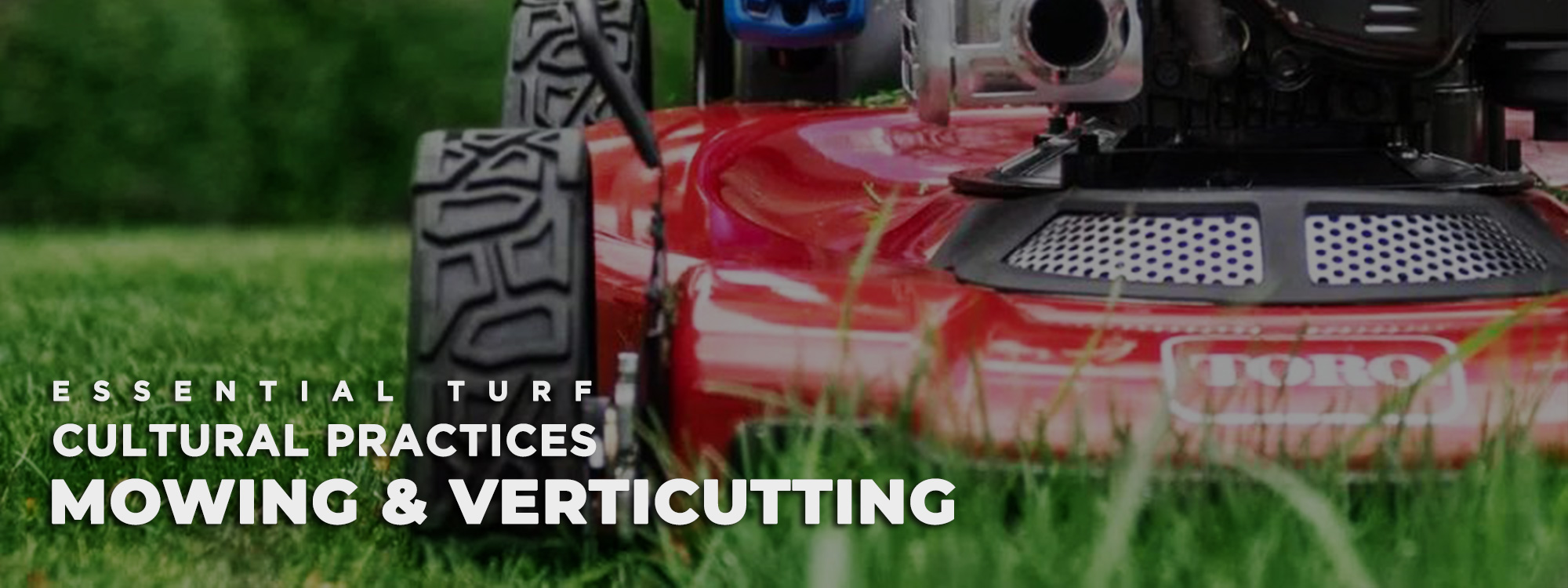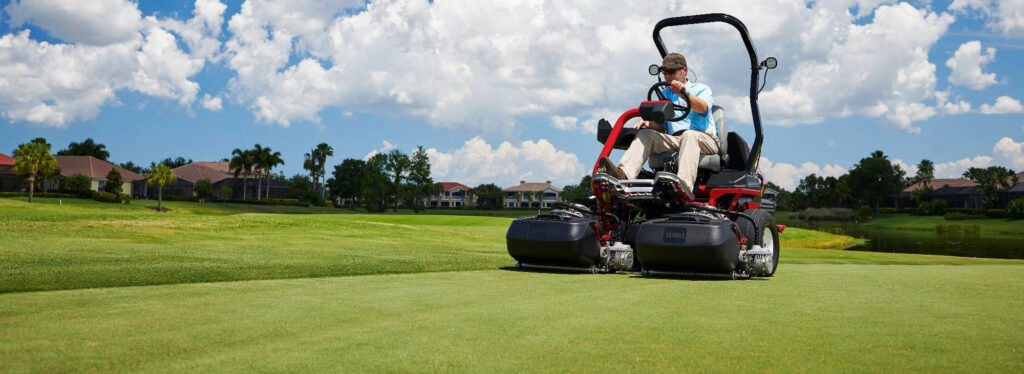
Golf course maintenance pose a number of unique challenges to Golf Superintendents.
- During the year, soil conditions can become very compact from the movement of maintenance machinery, Golf Carts and foot traffic, creating unfavorable growing conditions.
- Areas that receive a high level of foot traffic, such as a putting green, deteriorate over time due to soil compaction, thatch accumulation, and day-to-day stress.
- The goal is to have a healthier plant by relieving soil compaction, reducing thatch, and improving water and air exchange.
The following cultural practices provide an opportunity for both turf and soil to recover from daily play, promote turf density and health and helps in providing a good quality playing surface.
- Mowing
- Verticutting
- Aeration
- Top Dressing
- Greens Rolling
While mowing, verticutting and rolling are necessary to provide good playability, while others, such as aerification, are needed to enhance turf health and relieve soil compaction.
Mowing
Mowing is the most basic, yet the most important cultural practice a Superintendent can use to provide a desirable playing surface.
Mowing practices can affect turf density, texture, color, root development, and wear tolerance. Failure to mow properly usually results in weakened turf with poor density and quality.
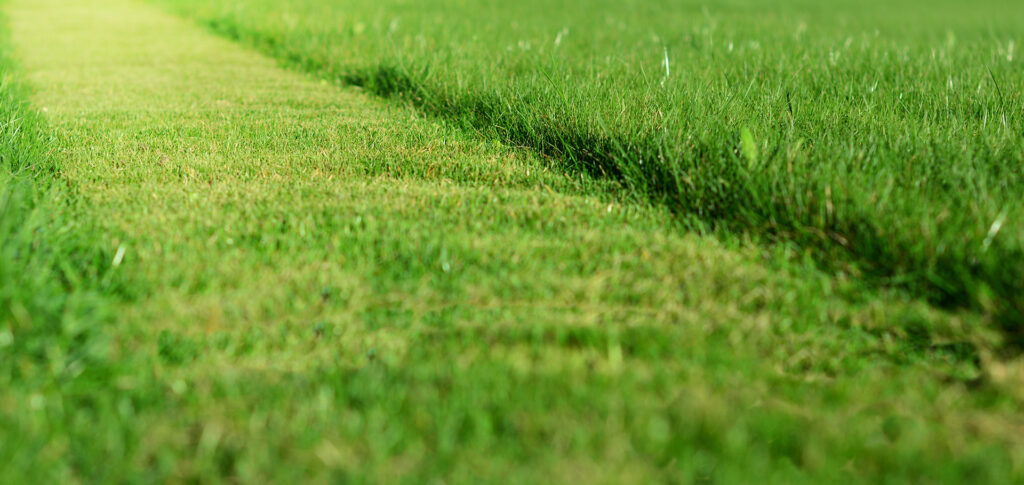
Frequent mowing increases shoot density, but decreases root and rhizome growth, because after mowing, food reserves are used for new shoot tissue development at the expense of root and rhizome growth. Improper mowing aggravates this problem further.
If the correct mowing height and frequency are used, then the turfgrass does not go through a stress period from the immediate loss of top growth and can recover more quickly. Infrequent mowing results in alternating cycles of elevated crowns followed by scalping thus depleting food reserves further.
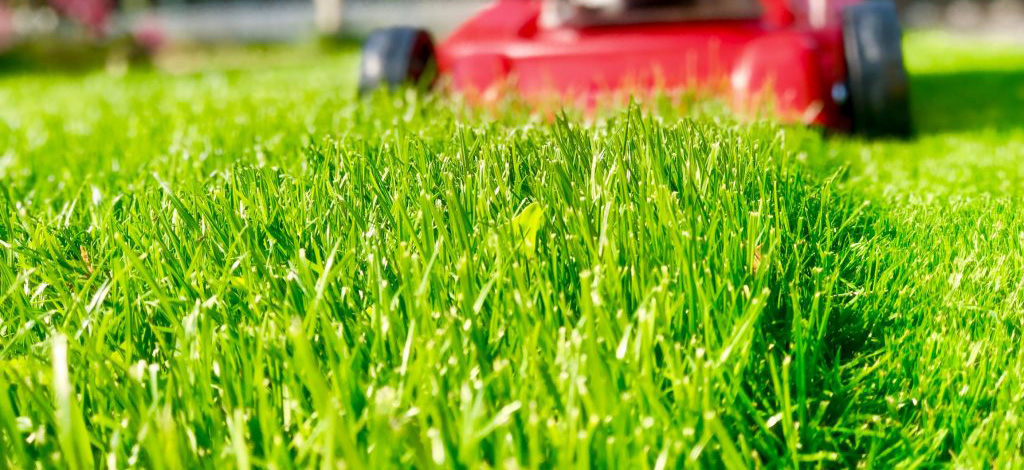
Remember, stressed turf means a weaker plant that is more vulnerable to drought, insects, and disease, and that needs more pesticides.
Height Of Cut: This refers to the height of top growth immediately after the grass is cut. While a closer height of cut is often considered more aesthetically pleasing, a taller turf offers better protection against pests and other stresses.
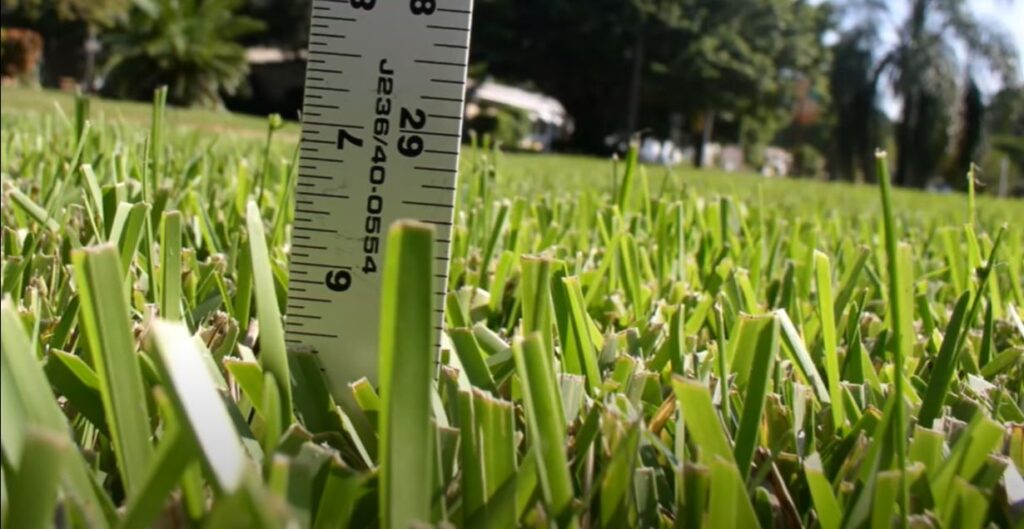
Bench Set HOC: Often height is adjusted and checked on a level surface such as a work shop bench and is thus referred to as the “bench setting.”

Effective Height of Cut: However, when a mower is operated on soft ground or when a thick, spongy thatch layer is present, the mower cuts lower ( effective height of cut ) than the bench setting, thus often resulting in undesirable scalping.
Thus determining the best height of cut (HOC) requires balancing the stress response to mowing with golfer expectations of playability, manpower availability for mowing frequency, weather conditions, and budget considerations for the increased maintenance requirements when mowed at lower HOCs.
One-Third Rule: The traditional rule is to mow often enough so that no more than one-third of the top growth is removed at any one time.

- Removing more than this amount decreases the recuperative ability of grass due to the extensive loss of leaf area needed for photosynthesis.
- A reduction in photosynthesis can result in the weakening or death of a large portion of the root system, because carbohydrates in roots are then used to restore new shoot tissue.
- Consequently, root growth may stop for a while, since the regeneration of new leaves (shoots) always takes priority over sustaining roots for food reserves following severe defoliation.
Mowing Frequency: Mowing frequency often is a compromise between what is best for the turf and what is practical for the sport.
- The growth rate of the grass should determine the frequency of cut.
- The growth rate is influenced primarily by mowing height, the amount and source of nitrogen fertilizer applied, and the season or temperature. Higher amounts of nitrogen result in faster top growth, necessitating an increased mowing frequency.
- Raising the mowing height reduces cutting frequency, helping to compensate for faster growing turf.
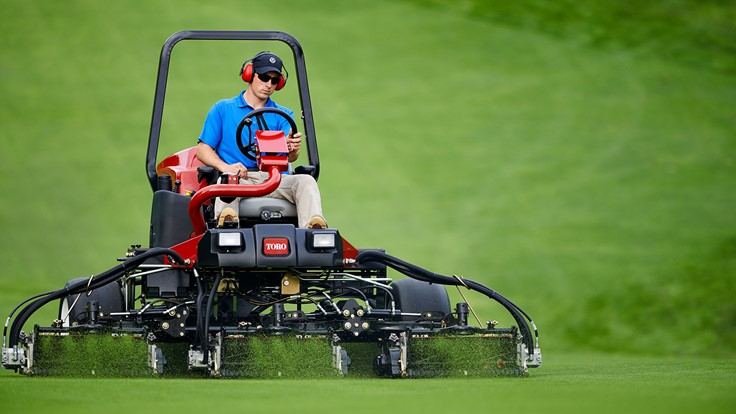
Following the traditional rule, mowing should be frequent enough so that no more than one-third of the top growth is removed at any one time
Mowing Pattern: If turf is mowed repeatedly in the same direction, the grass leans or grows in the direction in which it is cut.
Mowing continually in the same direction also scalps the same high spots and increases compaction. In addition, turning the mower at the same location and in the same direction encourages severe wear and soil compaction.
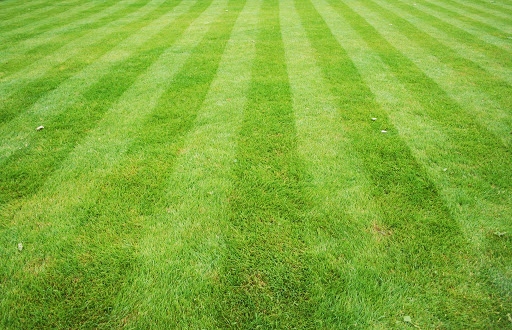
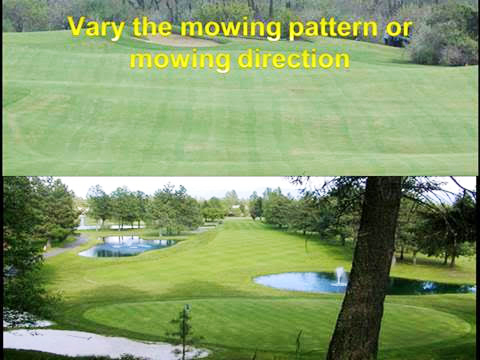
Mowing in the same directions should not be repeated over the long term, even though this may produce aesthetically pleasing appearance by alternating color differences.
Grain: The grass leans or grows in the direction in which it is cut. This horizontal orientation of grass foliage in one direction is called grain. Grain results in an uneven cut, a streaked appearance, and a poor quality putting surface on golf greens. The ball tends to follow the grain. When a different grain is encountered, the ball reacts by altering its path slightly
The mowing patterns or directions of golf greens should be changed daily and cleanup laps routinely reversed. Often a rotating clock pattern is followed for mowing directions and is changed daily.
Similarly, fairways should be mowed side to side and diagonally as well as longitudinally to minimize wear, compaction, and grain development. Varying the pattern of successive mowing easily prevents grain, encourages the upright growth of the shoots, minimizes the amount of leaf surface that the rolling golf ball encounters, and increases a green’s putting speed and accuracy.
VertiCutting
VertiCutting is the thinning of turfgrass by blades that cut perpendicular to the soil in a shallow swath or a deep cut.
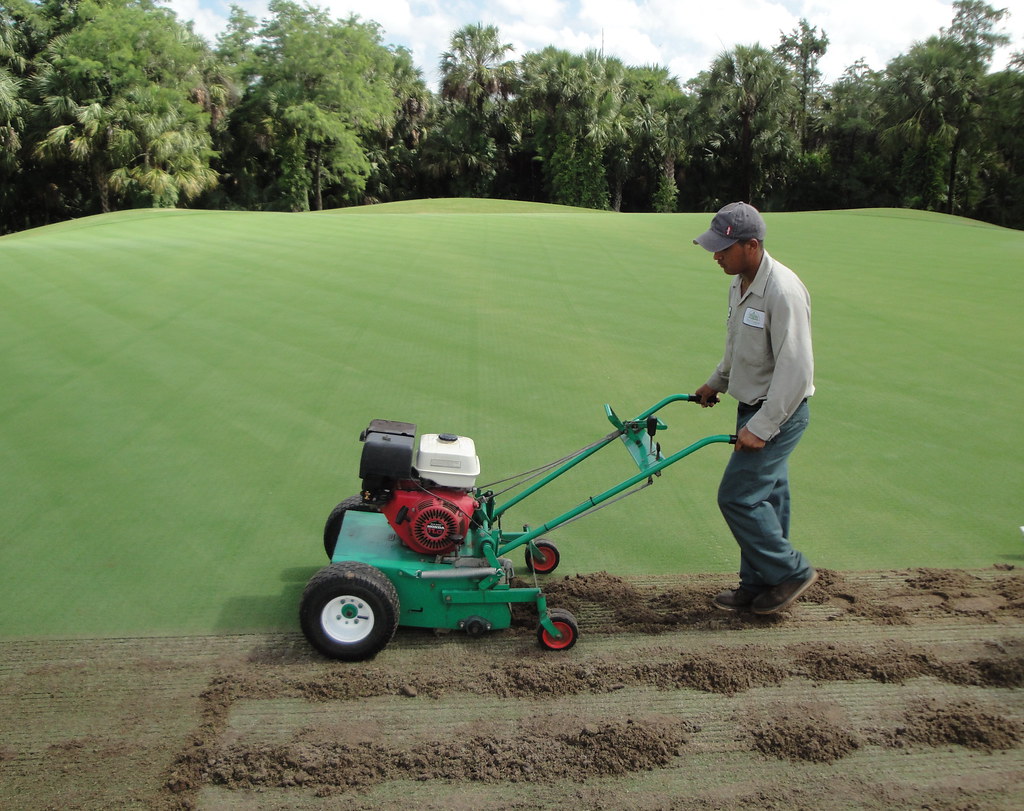
Vertical mowing meets different objectives, depending on the depth of the penetrating knives.
- The deeper penetration of knives stimulates new growth when stolons and rhizomes are severed and removes accumulated thatch.
- Cut laterally growing stolons and promote vertical growth habit
- Remove excessive leaf growth that contributes to puffy, spongy surface conditions
- Improve mowing quality and surface smoothness
- Grain is reduced on putting greens when the knives are set just to nick the surface of the turf.
- Shallow vertical mowing on tees and fairways breaks up cores following aerification, facilitating a topdressing effect.
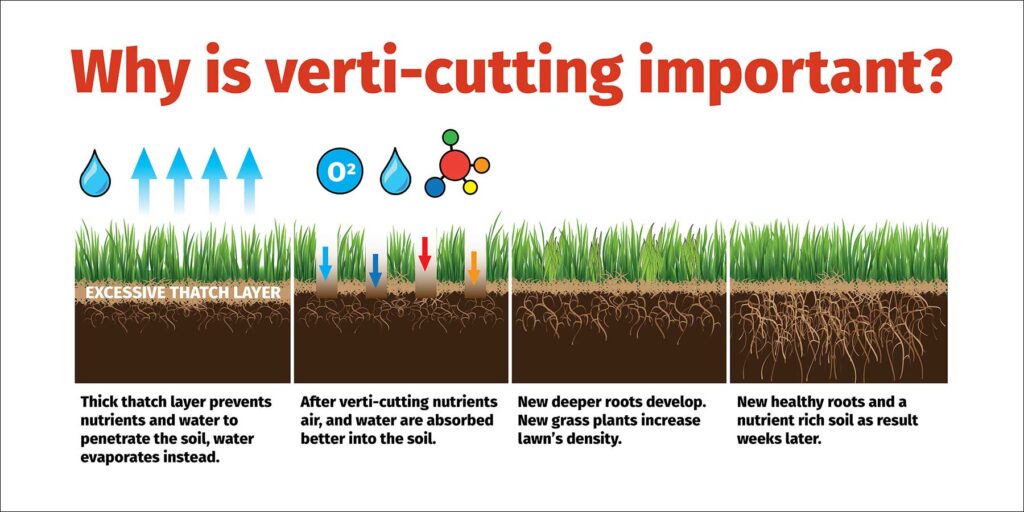
The desired depth of thatch removal determines blade depth when dethatching is the objective. Vertical mowing should reach the bottom of the thatch layer, and preferably the soil surface beneath the thatch layer should be sliced.
Timing: The frequency of verticutting and the time of year the practice is done can vary according to weather conditions and grass type. Superintendents should consider the turf type they have carefully and avoid stress periods or being too aggressive with depths of cuts at times when recovery would be slow,
Frequency: The rate of thatch accumulation dictates the frequency of vertical mowing. Vertical mowing should begin once the thatch layer on golf greens exceeds 0.25 to 0.5 inch
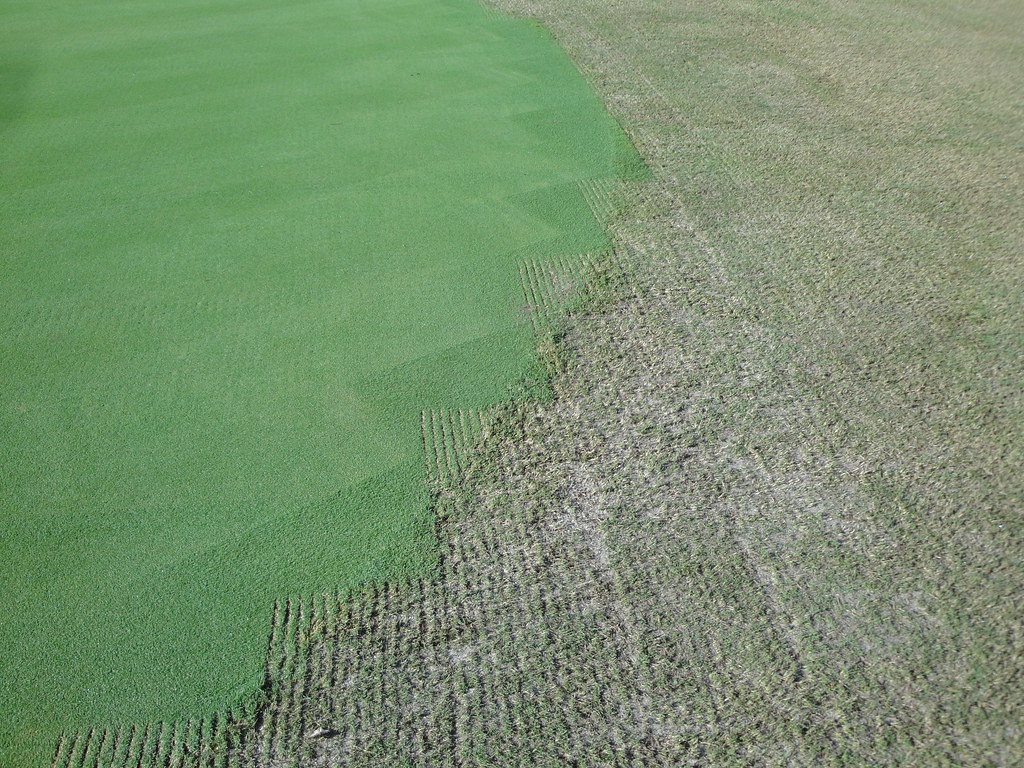
Be sure to verticut in different directions, just as with regular mowing.
Grooming and Brushing: An optional Groomer or a Groomer Brush can be attached in front of the reel cutting unit of greens mowers to lightly groom putting green turf. Likewise, brush attachments can be used in conjunction with daily mowing. These units improve the playing surface by standing up leaf blades before mowing, thus reducing surface grain. Slicing stolons also stimulates new shoot development, and thatch near the surface is removed.
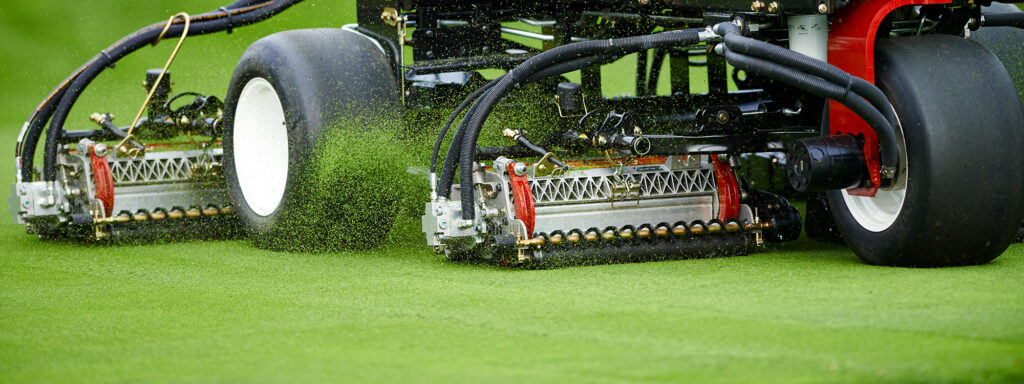
Suggested Products:
- Toro Greensmaster Series: Greens Mowers (GR 1021, 1026, GR Flex series GR 3250 )
- Toro Reelmaster Series: RM 3100, RM 5510, RM 5610, RM 5010H Hybrid mowers
- Toro Groundmaster Series: GM 3500, GM 3505, GM 4500
- Toro Verticut Reels / Dethatching Reels
For more details reach us at:
Email: info@ipi-india.com
Website: https://www.ipi-india.com/golf-course-management.php
